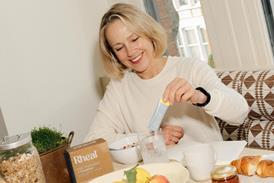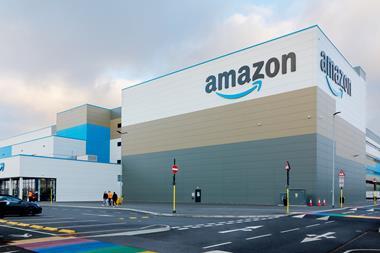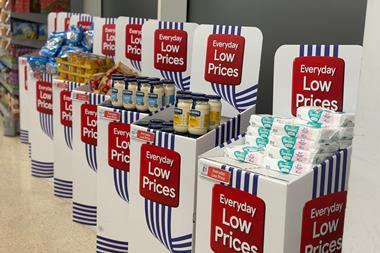Finding space on supermarket shelves for new beer brands is tricky, yet there are key needs brewers can fill to make their products stand out for supermarket beer buyers
Impressing supermarket beer buyers and convincing them to stock a brand on their shelves is a hard ask for any brewer. It has become more challenging following the combination of soaring production costs, the recent increase in duty taxes and a never-ending churn of NPD from rivals.
While there are no set rules to innovation, UK supermarket beer buyers agree brewers need to offer something unique to make an impact on shelves – whether that’s through novel flavours, clever marketing or aggressive pricing.
From dealing with shifting shopper behaviours to on-shelf clarity, buyers from Sainsbury’s, Waitrose and Ocado have shared their key takeaways for brewers wanting to make an impact in grocery.
Tom Southall, Sainsbury’s beer buyer

What beer styles do consumers want?
Sainsbury’s is seeing growth in hazy IPA as a style within craft beer. We are also seeing growth in stout overall, and Guinness continues to grow in popularity. New alternatives make the space more interesting and have attracted new shoppers from other categories. Within low & no, pale ale is growing where lager was once the most prominent style.
Will low & no-alcohol beer sales continue to grow?
Yes. We increased the space dedicated to low & no beer in September 2023. We tend to see an increased demand for low and non-alcoholic beers at this time of year, in the lead up to Christmas and Dry January. There is also a trend towards mid-strength and we expect to see this category continue to build momentum.
How can new and challenger brewers make an impact?
Challengers offer newness and more experimental beers. They have the ability to hit emerging trends quickly, as they can brew more flexibly, which can really freshen up the fixture.
Singles give the shopper the chance to have a bit of adventure. They might pick up a standard beer, but also think, ‘I’ll try this new thing’
Jourdan Gabbini, Waitrose beer & cider buyer
Jourdan Gabbini, Waitrose beer & cider buyer
What are the upcoming beer trends?

Moderation. Something we see coming down the road is lower abv beers (between 2%-3% abv), below the 3.4% abv duty bracket. They cater to that customer that wants to have a drink, but not a heavy one.
Read more: Britain’s biggest brewers’ business strategy
Stout is also having a lovely time. I think Guinness in particular has done a good job of communicating that it’s not just a winter drink, while other brands are beginning to disrupt this space too. This innovation is driving penetration into the beer style, which will ultimately benefit the overall stout category in the longer term.
Which beer brands are making an impact with limited-edition brews?
Northern Monk has historically had some really interesting and different flavours, like its Aunt Bessie range – it’s not every day you see a roast dinner-flavoured ale. Things like that always peak our customers’ interest, so there’s always a good reason to do it.
Camden is also moving into that territory, with its HP Brown Ale. It also did a Marmite beer a couple of years ago.
What beer format is preferable?
Our craft beer range is predominantly singles. Singles give the shopper the chance to have a bit of adventure. They might pick up a standard beer, but also think, ‘I’ll try this new thing’. Then, in the longer term, they might graduate to a four or 12-pack.
What’s the best piece of beer NPD you’ve seen in recent months?
Rosa Blanca is 3.4% abv but doesn’t taste like it; it’s quite a hoppy beer, so it feels more weighty.
READ MORE: What do supermarket buyers want from fmcg NPD?
Rich Bunting, Ocado beer & cider buyer

Which beers are selling well and which are less popular?
World beer has seen tremendous growth, accelerated by the likes of Madrí, Corona, San Miguel and Estrella Damm. Traditional and premium bottled ales continue to decline, with the duty change and its impact on abvs and price points potentially contributing to the customer shift towards craft or lager.
What can challenger brewers offer that big brewers can’t?
There is demand for home-grown craft beer and great-quality liquid; we are lucky to have some of the most passionate brewers in the world here in the UK, driving local and community-based breweries to the next level. Clever marketing tactics and being able to educate customers about the heritage and history of their brand is a real point of difference.
Read more: Carlsberg Marston’s Brewing Company an exploration
How can brewers communicate changes and reformulation caused by duty increases?
I would like to see closer working between brewers and retailers when it comes to customer communication around reformulations and the reasons for them. We update our back-of-pack information, however we often have little guidance or support when customers challenge the decision to lower abvs.
Do you prefer to stock singles or multipacks?
Ocado generally over-indexes in small to large multipacks due to our operating model, however single cans and bottles play a huge role when it comes to acquiring new customers and penetration for new categories and brands.
What information should brewers highlight on pack for online sales?
Given our online-only presence, it’s crucial customers can easily see all the relevant brand and product information (particularly abv, sustainability credentials and dietary information) on the back of pack to aid navigation and empower informed decision-making.
What’s the most exciting piece of NPD you’ve seen recently?
Rosa Blanca by Damm. It does exactly what it says on the tin; it’s a light, refreshing, lower 3.4% abv liquid, which is suitable for most meal occasions at a great price point.

























No comments yet